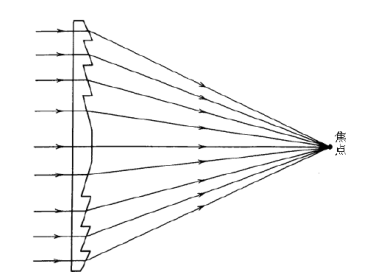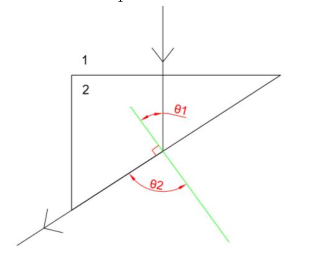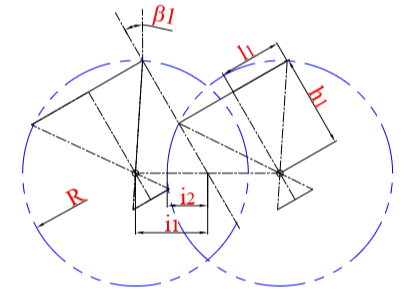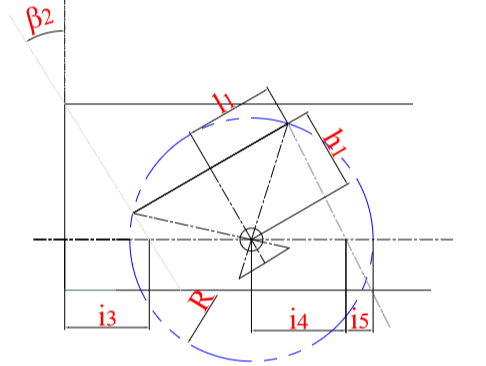与建筑一体化太阳能光热光伏聚光器优化设计与实验毕业论文
2020-04-15 18:05:05
摘 要
与建筑一体化太阳能光热光伏聚光器的研究有利于提高太阳能综合利用效率及扩大集热器的应用范围,可以与建筑物屋顶有效的结合,既使建筑物的闲置表面得到了充分的利用,又可以为建筑物同时提供热能和电能。
首先设计光伏光热一体化聚光集热器结构,聚光集热部分由线性菲涅尔透镜、双层玻璃集热管、单晶硅光伏电池板组成;自动跟踪部分由平面连杆结构与齿轮传动系统组成;并对组成零件做了简单的介绍。
选取集热器系统内部聚光体单元的菲涅尔透镜半宽、光伏电池板半宽、正午时两个菲涅尔透镜间隙等五个尺寸为设计变量,约束条件为影响因子大于0.7、聚光比大于3、设计单元体内部尺寸均小于初定尺寸等条件,目标函数为当聚光器系统的年平均光学效率达到最大时单元体的具体尺寸值;建立数学模型,运用MATLAB编程求解集热器单元体的具体尺寸,得到最大年平均光学效率为75.6%,远远大于传统的槽式菲涅尔透镜集热系统的最大光学效率。
根据已得经过优化的聚光器的具体尺寸在SOLIDWORKS中建立三维模型;先将简化的单元体模型导入到TRACEPRO进行光学模拟,计算出单个单元体吸收光能的效率,再将整体系统模型导入,得到模拟年光学效率的平均值71%,对理论与模拟年平均光学效率做误差分析。
最后对影响系统年平均光学效率的因素进行分析,如结构因素、地理因素、材料因素、认为因素等;并对本次设计做成本估算,共花费3500元,预计成本回收期为五年。
关键词:与建筑一体化光伏光热 聚光器 优化设计 光学效率
Optimization Design of Solar Photovoltaic/thermal
Concentrator Integrated with Building
Abstract
The research of solar photovoltaic/thermal concentrator integrated with buildings is conducive to improving the comprehensive utilization efficiency of solar energy and expanding the application range of collectors. It can be effectively combined with the roof of buildings, which not only makes full use of the idle surface of buildings, but also provides both thermal energy and electrical energy for buildings.
Firstly, the integrated photovoltaic/thermal collector was designed. The concentrator is composed of linear Fresnel lens, double-layer glass collector tube and monocrystalline silicon photovoltaic panel; The automatic tracking part is composed of plane connecting rod structure and gear drive system.;And the component parts were briefly introduced.
Internal condensing unit of Fresnel lens collector system wide, photovoltaic panels and two Fresnel lens gap width, noon five sizes was selected as design variables, such as constraint condition for the fill factor is greater than 0.7, concentrated than internal dimensions are greater than 3, the design element is less than the initial condition such as size, the objective function for when the annual average optical efficiency of condenser system reaches maximum when the size of the elements; The mathematical model was established and the specific size of the collector element was solved by MATLAB programming. The maximum annual average optical efficiency was 75.6%, which was much higher than the maximum optical efficiency of the traditional trough Fresnel lens heat collecting system.
The 3D model was built in SOLIDWORKS according to the specific size of the optimized concentrator. Firstly, the simplified element model was imported to TRACEPRO for optical simulation to calculate the efficiency of single element body in absorbing light energy. Then, the model of the whole system was used to obtain the average value of simulation efficiency, and made an error analysis of the theoretical and simulation efficiencies.
Finally, the factors affecting the average annual efficiency of the system were analyzed, such as structural factors, geographical factors, material factors, and perceived factors. And the design cost was made, a total of 3,500 yuan, estimated cost recovery period of five years.
Key Words: BIPVT; Concentrator; Optimization design; Optical efficiency
目 录
摘要 .......................................................................I
Abstract ...................................................................Ⅱ
第一章 绪论............................................................... 1
1.1 太阳能开发利用的背景及意义............................................ 1
1.2 光伏光热复合利用的现状................................................ 1
1.3 光伏光热建筑一体化的发展.............................................. 2
1.4 主要研究内容.......................................................... 3
第二章 光伏光热一体化聚光器设计........................................ 4
2.1 设计原理.............................................................. 4
2.1.1 聚光原理.......................................................... 4
2.1.2 光路分析.......................................................... 4
2.1.3 工作原理.......................................................... 5
2.1.4 结构组件介绍...................................................... 5
2.2 设计方法.............................................................. 7
2.2.1 优化设计.......................................................... 7
2.2.2 确定设计变量...................................................... 9
2.2.3 确定目标函数...................................................... 9
2.2.4 确定约束条件...................................................... 9
2.3 理论效率计算......................................................... 11
2.3.1 余弦效率......................................................... 11
2.3.2 光传播效率....................................................... 11
2.3.3 采光效率......................................................... 12
2.4 设计过程............................................................. 14
2.4.1 图示尺寸说明..................................................... 14
2.4.2 建立数学模型..................................................... 16
2.4.3 数学模型求解..................................................... 17
2.4.4 最终解确定....................................................... 17
2.5 考虑放置倾角对效率的影响............................................. 19
2.6 本章小结............................................................. 21
第三章 光伏光热一体化聚光器光学模拟................................ 22
3.1 结构建模............................................................. 22
3.1.1 菲涅尔透镜的设计.................................................. 22
3.1.2 SOLIDWORKS建模.................................................... 23
3.1.3 TRACEPRO模型...................................................... 25
3.2 光学模拟............................................................. 26
3.2.1 单元体模拟........................................................ 26
3.2.2 集热器系统模拟.................................................... 27
3.2.3 模拟结果分析...................................................... 28
3.3 本章小结............................................................. 28
第四章 光伏光热一体化聚光器分析....................................... 29
4.1 光学效率影响因素分析................................................. 29
4.2 经济分析............................................................. 30
4.2.1 本此设计的花费情况............................................... 30
4.2.2 系统整体经济效益................................................. 31
4.3 本章小结............................................................. 32
第五章 总结.............................................................. 33
5.1 全文总结............................................................. 33
5.2 不足与展望........................................................... 33
参考文献.................................................................. 35
附录...................................................................... 38
致谢...................................................................... 44
第一章 绪论
以上是毕业论文大纲或资料介绍,该课题完整毕业论文、开题报告、任务书、程序设计、图纸设计等资料请添加微信获取,微信号:bysjorg。
相关图片展示:











